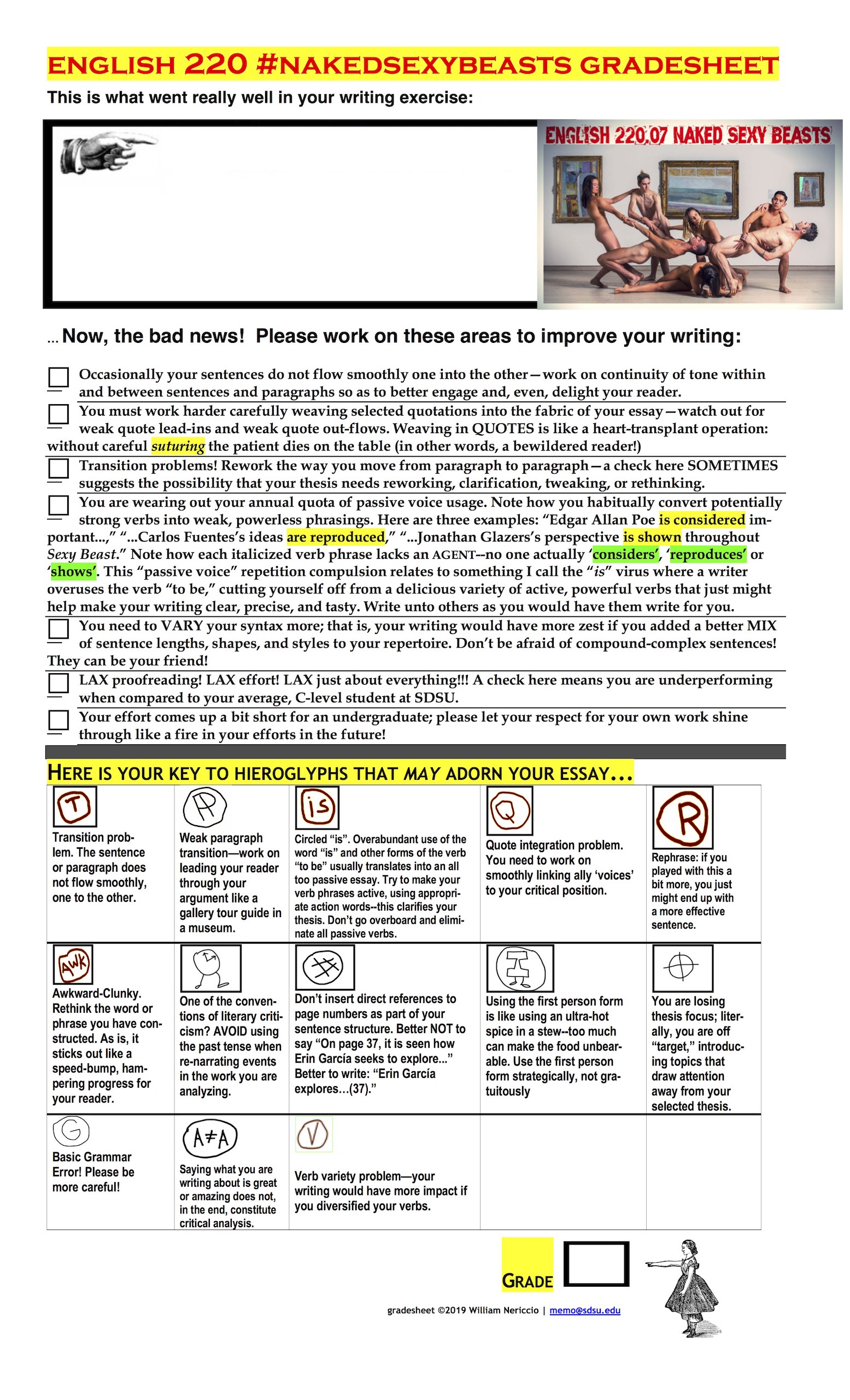#nakedsexybeastsENGLISH
220
|
|
Lastly,
please use
MLA or University
of Chicago works cited style pages to guide your
formatting. Your beastly bundles of genius are due Friday, November 8
at or before 12 noon--you will come to
my office and drop your paper into the appropriate
bag at the front of my office door, Arts and Letters 273. These
bags correspond to your specific #nakedsexybeast
team (there will be one other bag with my name on
it as well for those who want to brave the choppy
waters of my grading!). Late
papers
will not be accepted. Early papers, in most cases,
will be cherished lovingly. All
"A-grade" level "imagination challenge" essays will
integrate select, direct quotations from the primary
texts read thus far in the class this semester and
will avoid ALL of the quicksand-like bad habits listed
on the gradesheet
already mentioned above.
Additionally, A-level grades will be awarded ONLY
to crafty undergraduates who make use of scholarly
research discovered either by prowling "the stacks"
(the shelves and shelves of books that fill Love
Library, aka the "Library
of Love") or that you can gather off of JSTOR or PROJECT
MUSE--be sure to CITE THESE WORKS CAREFULLY. In
general, avoid research garnered from the
internet--any use or adaptation of material from Spark
Notes, Shmoop, Cliffs Notes, Barron's Notes, etc (and
especially essays that rely on Wikipedia) will likely
be returned to you ungraded or burned ritually at a
secret sacred site guarded by literary monsters! One last
bit of advice, do NOT plagiarize ANY material from an
online source or 'paper mill.' In other words: unCITED material = PLAGIARISM;
also, as noted above, if you are going to analyze a key
element from an illustrated or filmed work, do please go
to the bother of xeroxing the image and incorporating it
INTO your essay with captions and with a notation in the
'Works Cited' to let your readers know where you got it
from. Last hint? Have a blast with this paper! Try things you have NEVER tried before! Test the limits of your imagination! Good luck! This IMAGINATION CHALLENGE is slightly different from other writing assignments you may have completed as an undergraduate (for example, please leave everything you learned to loathe in RWS 100 or 200 at the door--unless your instructor was a genius, in which case, use your best judgment). For this Imagination Challenge you will fill in the blanks provided below and then complete the essay making sure to provide specific textual evidence to sustain/defend/illustrate your stated position in your writing! FINISH only ONE of the following challenges. Note that some of the blanks below are meant to be filled with authors' names whilst others should be filled with specific phrases/ideas; read the prompts carefully to make your final determination. One last thing. Try to finish your paper a DAY BEFORE it is due. Print it out and lay it on a desk in your room. A day later, wake up early and take this printed work and go to a room/library/cafe you don't usually go to--go there with a big old printed dictionary, you should own one and you can get good ones for cheap at old book stores like Maxwell's House of Books, DG Wills Books, Bluestocking Books, Verbatim Books, and other area book shops. Take your paper to this special place and edit your paper. We really don't have the power to carefully edit a document on the screen where it was composed. You must switch the medium, going from screen to paper, from photons to ink, to see errors your reader will trip over! Cool. Go for it! Here are your prompts! Unless you KNOW you can write a better introductory paragraph, please use these PromptParagraphs™ (an intellectually enhanced version of MadLibs!) as your actual opening paragraph for your paper. Option 1. Opposites Attract At first
glance, Art Spiegelman’s “Maus, ” H.G.
Wells’s The
Island of Dr. Moreau, and Herculine
Barbin's memoir (in the edition we read edited by
Michel Foucault) seem
to have little to say to one another. They
take place in wildly different times and places, and
appear to be about extremely different
subjects. But take a second look. After
all, doesn't each book feature
__________________________________? And all
three, curiously, also seem to focus on
_______________________________. In the pages that
follow I will tease out the details of this textual
mirroring. In the end, I hope to show how ... Option 2: Psychoanalysis & Graphic Narrative (note that doing this challenge means doing some careful secondary research on what Freud called the human "unconscious.") A provocative graphic narrative by Gilbert Hernandez, Human Diastrophism challenges its readers to explore the _________________ and ___________________of the human mind--to be more specific, Hernandez take viewers/readers on a tour of ___________________ introducing characters and situations that reveal ____________________. Recently, specific scholars have written essays that shed new light on these psychoanalytic phenomena--typical among these is "__________{essay title}_______________" written by ____{scholar's name}_________. However, I am not totally content, with Professor _________________'s study. In the paragraphs that follow, I will briefly illustrate my problems with his/her work and suggest better ways to explore the concept using Hernandez's novel comic book to guide my way. Option 3: George Orwell,
Jonathan Glazer, and Michel Foucault, Fused! How is it possible that a British writer from the early 20th century, a late 20th century British director, and a French intellectual historian can be seen to share a similar obsession? And yet that is the case with George Orwell, Jonathan Glazer, and Michel Foucault. In my brief study that will unfold before you here, I will take the time to focus on the themes of _____________ and ______________ in all three of these works. As I weave a critical tale of Orwell's, Glazer's, and Foucault's kinship, I will also take time below to point out their contrasts, especially with regard to ________________________. Option 4. Literary Criticism:
Herculine Barbin, Edgar Allan Poe, and Art
Spiegelman The best literature is merely a vehicle for surveilling the complex corridors of the human mind. With ___________{main character name}__________(from Herculine Barbin, ___{main character name}_________ (from one of Edgar Allan Poe's short stories), and ______{main character name}______ (from Maus) writers Herculine Barbin, Edgar Allan Poe, and Art Spiegelman introduce readers to the complexities of _______________________________. I will use the next few pages to delve carefully into the psyches of these three memorable characters from literature in order to explore how ___________________________. In order to add complexity to my comparative dissection of Barbin's, Poe's, and Spiegelman's achievements, I will incorporate a recent piece {after 2010} of literary criticism written by ________________ that focuses on _______________ _______________________ --this essay helps us probe the imaginative depth and psychological complexity of these three memorable characters. Option 5: Tag Team Essay!
Myriam Gurba and Gilbert Hernandez The conclusion of this essay appears here in the introduction: Myriam Gurba's Mean and Gilbert Hernandez's Human Diastrophism have nothing to do with each other. I know what you are thinking. "How can that be" or "this writer is crazy." After all, both works, the movie and the novel introduce us to stories fixated on violence, serial killers, and sexuality. But I intend to argue something opposite. That when you look closer Gurba and Hernandez actually emerge as adversaries, as antagonists, and that Gurba's recent memoir and Hernandez's classic graphic novel are better seen as ___________________. To tell this story, I will rely on recent cultural criticism by ___________________ to assist me in the weaving of my argument...
Option 6. Race, Eugenics,
Darwin... A provocative psychological film by Boots Riley, Sorry to Bother you challenges its viewers to explore connections between labor economics, scientific experimentation and human evolution/manipulation--to be more specific, Riley takes viewers on a tour of _________________________________ introducing characters that ______________________ and _____________________________. A century or so earlier, H.G. Wells authored his The Island of Dr. Moreau--a novel that asked its readers to imagine ___________________________________ . Recently, specific critics have focused on the dangers of eugenics, of outright attempts to manipulate the evolution of species--typical among these is ________________ written by _____________. I am not totally content, however, with Professor ______________'s study. In the paragraphs that follow, I will briefly illustrate my problems with his/her work and suggest better ways to explore Riley's film and Wells's novel.
Option 7. Allusions
Allusions Allusions... In the first seven weeks of this class, we have been drowned in literary and cinematic works that are filled with allusions and while Professor Nericcio has been scrupulous in tracking down many of these significant allusions, he just does not have the time in 75 minutes with 281 students to really explore the down and dirty nitty-gritty of some of the more curious allusions we have run across so far. In the paragraphs that follow, I will try to document some of the more compelling literary allusions we have run across that our good Professor failed to focus on in class... Option 8: Poe and Fuentes
visit Freud Oscar Zarate,
illustrator, along with Richard Appignanesi, writer,
treated us to a dynamic and unconventional
introduction to the work of Sigmund Freud with their
collaborative masterpiece Freud For Beginners. But a gloss of
Freud is not the same as reading Freud, so in
preparation for this deep dive into the work of Carlos
Fuentes's Aura and Edgar Allan Poe's
________________________________, I prowled
the library and found an essay, by Freud, entitled
________________ Option 9: Verisimilitude or The Play within the Play Many of the works that have happened our way this term are metatextual--that is, they are as likely to tell a compelling fictional tale as they are to tell a story about the nature of storytelling itself (in a sense, then, we can say that most of the beastly works we have sampled this semester are allegorical). In critical writings, this practice goes by various names: self-referentiality, postmodernity, poststructuralism, and 'breaking the fourth wall'. Trapped in Love Library, I happened upon ________________ written by ___________________________. His/Her writings on the nature of self-referentiality/postmodernity/poststructuralism/'breaking the fourth wall'/ metatextuality (PICK ONE) give us a better way to enter into a discussion of _____________________________ and _________________________ (pick two works we have worked on this semester). Using this critical work, I will attempt to show how_________________________________... Option 10: Poet Poet! While not the first
combo of poets you might expect to come across
together, Edgar Allan Poe and Carlos Gabriel Kelly
have, upon careful inspection, much in common. For
instance, both poets seem drawn to meditations on
___________________ Option 11: Tag Team Essay!
Myriam Gurba and Gilbert Hernandez The conclusion of this essay appears here in the introduction: Myriam Gurba's Mean and Gilbert Hernandez's Human Diastrophism have nothing to do with each other. I know what you are thinking. "How can that be" or "this writer is crazy." After all, both works, the movie and the novel introduce us to stories fixated on violence, serial killers, and sexuality. But I intend to argue something opposite. That when you look closer Gurba and Hernandez actually emerge as adversaries, as antagonists, and that Gurba's recent memoir and Hernandez's classic graphic novel are better seen as ___________________. To tell this story, I will rely on recent cultural criticism by ___________________ to assist me in the weaving of my argument... Option 12: Comics, Comix,
Sequential Art, Graphic Narrative Chelsea Kane's Maneaters, Art Spiegelman's Maus, and Gilbert Hernandez's Human Diastrophism all emerge as pathbreaking graphic fictions that push the envelope when it comes to comic book storytelling. But where the three really converge, where, in effect, their disparate travails come together is around the theme/idea/notion of ___________________________________________________. In the pages that follow, I will consult interviews with Kane, Spiegelman, and Hernandez, and do careful close readings of specific panels from their works in order to show how ______________________________________... Option 13. Roll your own! Develop and refine your OWN
independent fill in the blanks prompt--it must make use
of at least two works from the required texts (books,
film, graphic narrative, etc) we have and will peruse
this term. You MUST bring your proposal to me, typed out
on paper by the beginning of class Thursday, October 31,
before OR after class, or email your proposal to me at
memo@sdsu.edu--no emailed proposals will be considered
after 12noon, Friday, November 1, 2019. You are
also welcome to run it by me in person during office
hours or by appointment. Have fun!
|
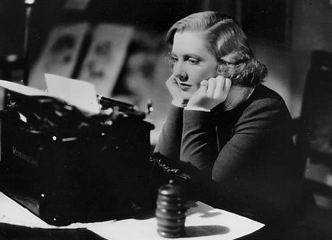 Write unto others as
you would have them write for thee! Write unto others as
you would have them write for thee! |
| MODELS FOR GOOD
LITERARY AND FILM CRITICISM |
| If you have
never read a good piece of literary criticism or
film theory, it is probably a good idea to read some
BEFORE you tackle this writing assignment; below
appear paragraphs and a link to some good writing
focused on literature and film. As you do your
research for your essay, pay attention not just to
the ideas of the critics you select to share in your
essay as proof, pay attention as well to the way
they carefully craft these arguments. Edward Said, one of my stylistic mentors, on Joseph Conrad...  Edward Said, again, on Joseph Conrad (and Sigmund Freud)...  Helen Vendler on Criticism 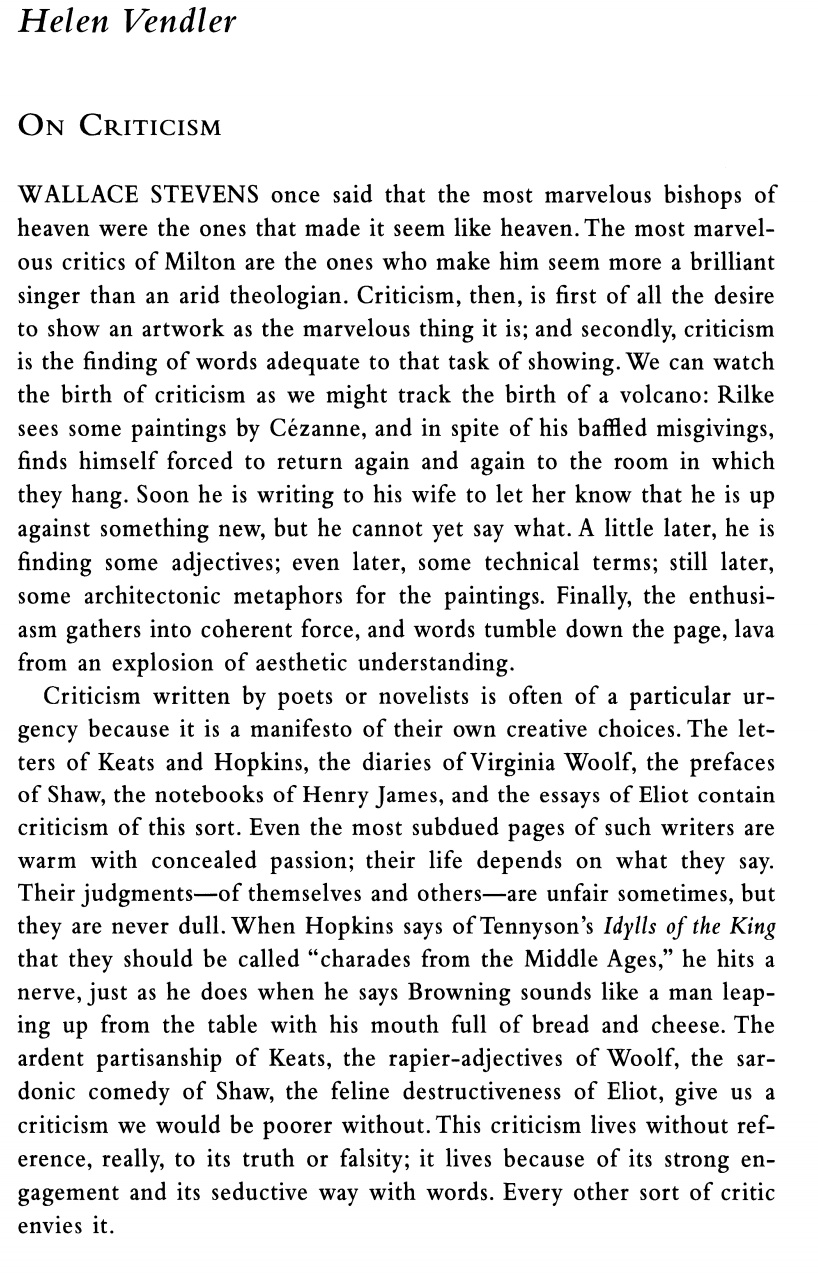 and last, J. Hoberman (extra-cool film theorist)... (click image to see/read his full review)... 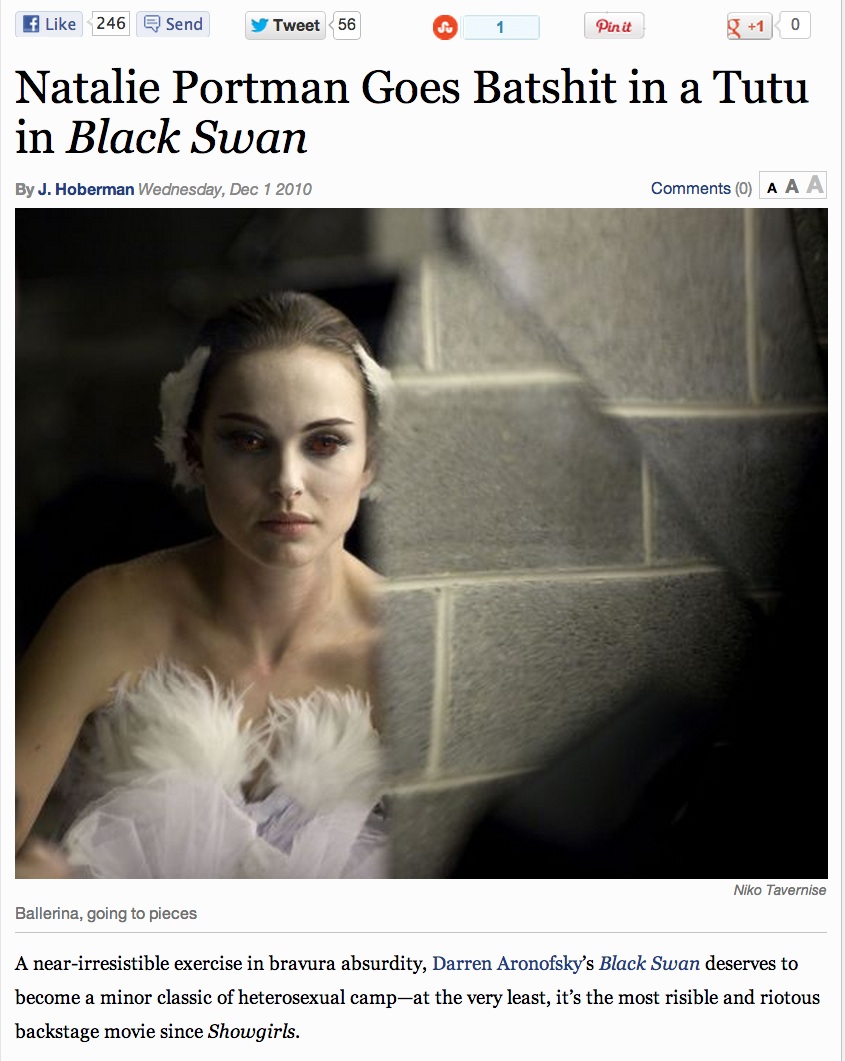 |
| urgent issues? email: memo@sdsu.edu |
| Back
to your day to day diary! |

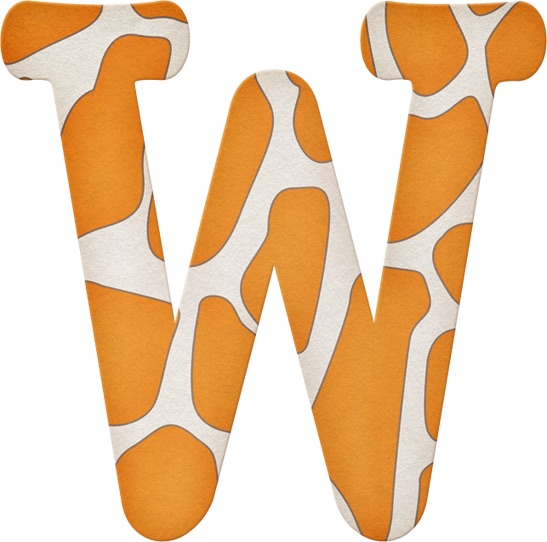 elcome to "Beastly
Imagination Challenge"--your major paper assignment for
Fall 2019 in English 220: #nakedsexybeasts. The writing
you will turn in, based on the prompts below, should be
no longer than 5 to 8 pages in length (if you
elcome to "Beastly
Imagination Challenge"--your major paper assignment for
Fall 2019 in English 220: #nakedsexybeasts. The writing
you will turn in, based on the prompts below, should be
no longer than 5 to 8 pages in length (if you 